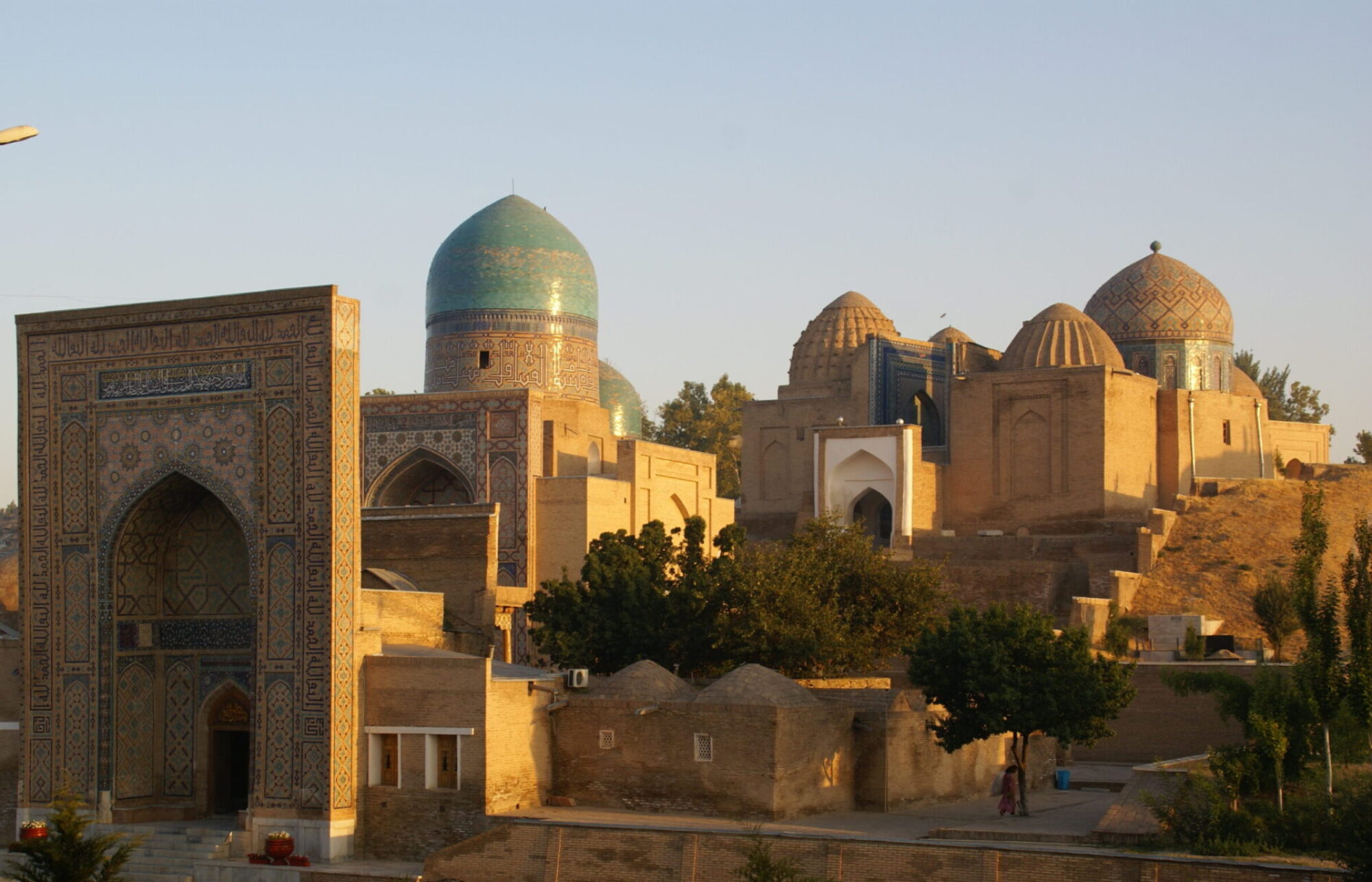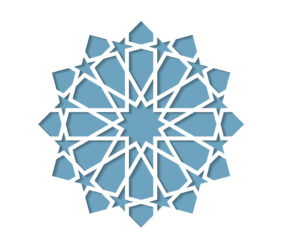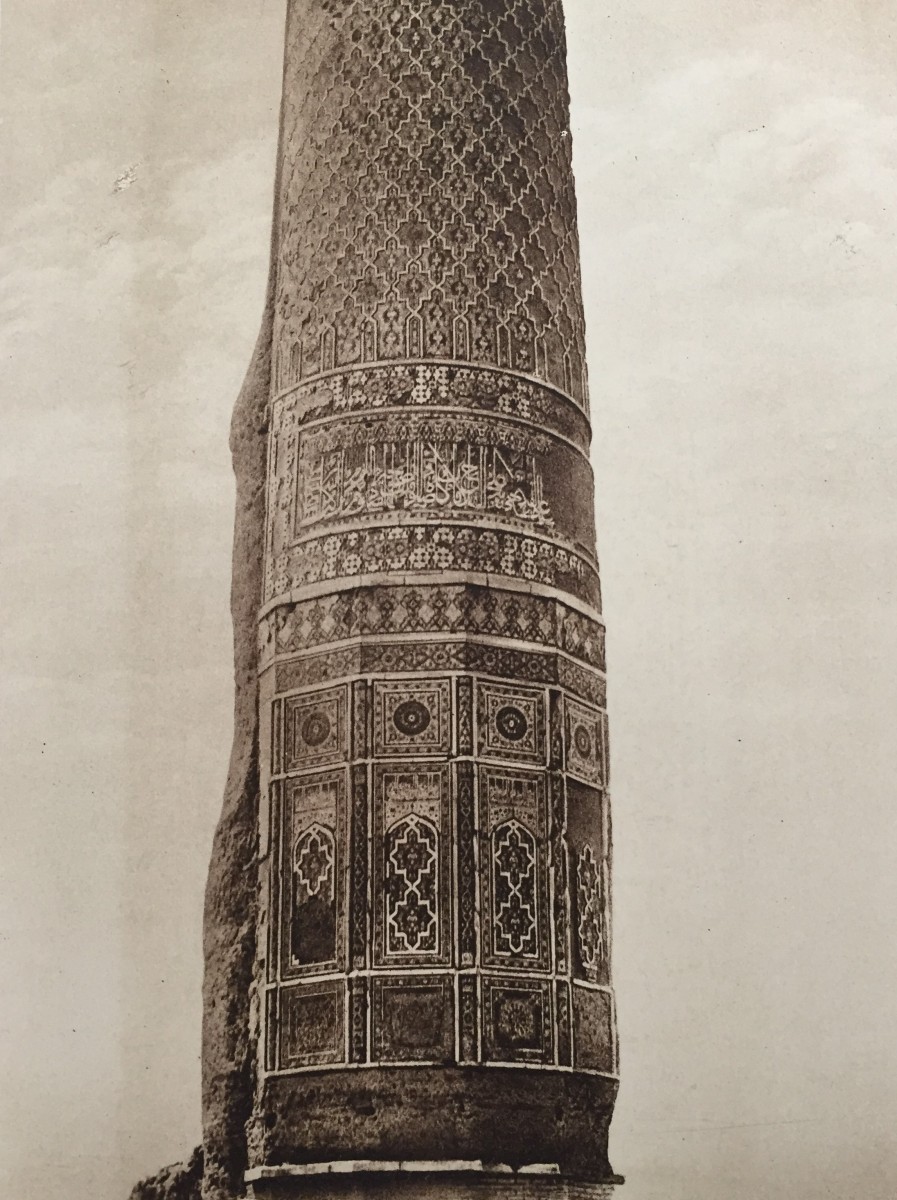The main architectural activities of Gawharshad (r. 1409-1447) in Herat were concentrated around the musalla (open air prayer area), situated to the north of the walled city along the new Timurid khiyaban (avenue). The Gawharshad Mosque was built between 1417-1438 on a four-iwan plan with a central courtyard measuring 116 m by 64 m and an enlarged western iwan, flanked with twin minarets, which served as the main prayer hall. The main sanctuary had two domed chambers in line of the qiblah (prayer niche), which is rather unusual. The court was surrounded by a two-storey arcade and there were tall minarets in each corner. The whole complex was entirely decorated with polychrome tiles. The minarets had twelve sided lower shafts clad with marble slabs with exquisite calligraphy.
The madrasa and tomb of Gawharshad from 1432 formed part of the same musalla ensemble. The main monumental entrance iwan of the madrasa was to the east, following the khiyaban, and it was flanked by two corner towers. The inner court was built around four iwans. The mausoleum of Gawharshad, which has been preserved, has a cruciform plan with the centre covered by a shallow convex dome supported by a network of pendentives and semi-domes. The second dome strengthens the tall cylindrical drum that supports the third outer dome. Similar to Gur-i Amir, the Timurid dynastic mausoleum in Samarqand, this ribbed dome is covered with polychrome tiles on a blue background. The mausoleum had most likely an underground crypt. The madrasa and tomb complex may have been envisaged as the dynastic burial site of the Gawharshad family.
As part of the revival of Sunni orthodoxy, Shahrukh, his viziers, and Sultan Husayn Bayqara erected a series of madrasa-khanaqah ensembles in Herat. Of particular importance is Shahrukh’s madrasa-khanaqah complex built in 1410–1411 to the east of the citadel and Sultan Husayn Bayqara’s ensemble from 1492-1493 to the north of the musalla along the khiyaban. The construction of khanaqahs with royal patronage exemplifies the ever increasing power of Sufism in the Timurid Empire at the beginning of the 15th century. Furthermore, the madrasas and bazaars of Herat were a gathering place for preaching Sufis, a place for solving disputes in front of the city elite and a stage for ecstatic shaykhs.


